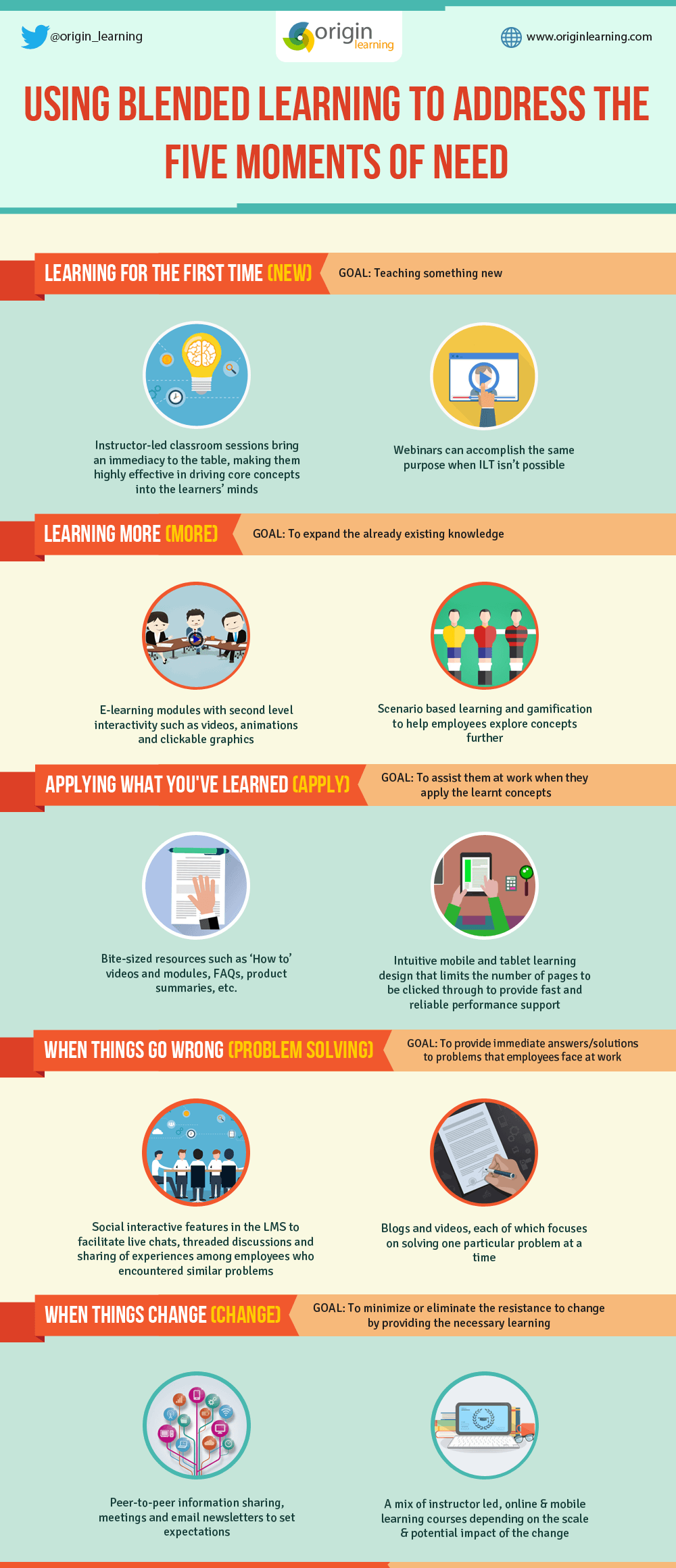
5 Critical Needs Met By Blended Learning
As is often on this site, I have written about the benefits of using a blended learning approach when delivering course content.
Whether it’s in education or the corporate setting, the advantages of using a live and virtual strategy for presenting materials have proven to be beneficial. Case studies show that learners are performing better when the content is offered in a variety of ways.
While it is quite apparent that blended learning initiatives work (when implemented correctly), perhaps you are curious as to why they are so effective?
The folks at Origin Learning attempt to provide us with this reason – actually five reasons.
According to their infographic below, blended learning works so well because it address five moments of need of a learner. In short, these moments are:
- Learning content for the first time (new)
- Learning more about the subject (more)
- Applying the content that has been learned (apply)
- Knowing what to do when things go wrong (problem solving)
- Knowing what to do when things change (change)
While I cannot disagree with these five areas, my personal opinion is that we have to be careful when making lists of this nature, especially when it applies to defining the way we learn. The human brain is quite complex, and lists (while easy to understand) don’t fully capture these complexities.
For example, you could easily break each one of these into further subcategories. Looking at number four (problem solving), a logical distinction would be defining the type of problem based on a metric of urgency.
Nonetheless, this is a pretty good attempt at describing why blended learning is growing in use. It does help the learner to better retain the information so that they are prepared for applying, problem solving, and changing.

Justin Ferriman
@LearnDashLMS







